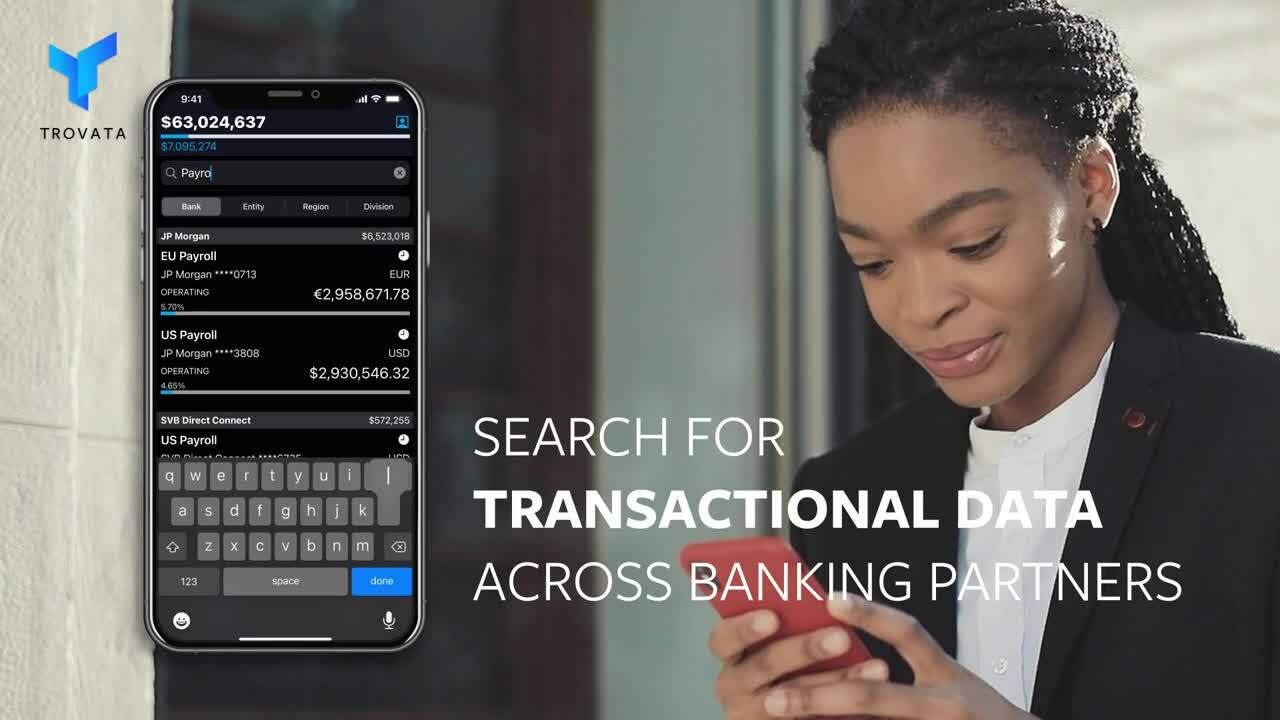A cash flow forecast is a report that predicts your company’s future cash flows—it estimates how much money will come in and go out during a given period.
An accurate forecast is like a cheat sheet for the future because it gives you the information you need to confidently make strategic decisions. You can also use forecasting to know when to invest your extra cash and unlock additional earnings.

Why Cash Forecasting is Vital to Growth
The world is an ever-changing place and economic uncertainty is the new normal. Contingency plans — for both good and bad outcomes — are needed to keep businesses nimble and ready to act when circumstances change.
- Recessions bring opportunities, such as lowering advertising costs and streamlining operational efficiencies.
- Supply chain issues can drastically change a firm’s cash outlays practically overnight.
- Interest rate changes can eat up or free up capital.
- Big news in your sector can crush or send your stock price soaring.
- A natural disaster could wipe out a warehouse or retail location for months.
When all of your bank data is being tracked, categorized, and constantly analyzed, you have a much better chance of reacting quickly to changing circumstances by deploying intelligent scenario planning to reduce risk and create new growth opportunities.

How is a Budget Different From a Cash Forecast?
Cash flow forecasting isn’t the same as budgeting. For one thing, the purpose is different: Whereas budgeting helps you plan your resources and capital for a project or business group, cash forecasting helps you manage cash efficiently.
For example, it can tell you if you’ll have enough reserves to pay down your debt and cover expenses without overdrawing an account.
Because they have different goals, budgets and cash forecasts include different information.
In a budget, you would include all the resources you need for a project or business section over a given time period—often a year. Budgets typically don’t separate out bank or cash movement.
In contrast, cash forecasts don’t tell you about the resources a given project will need—they tell you what you can expect your bank balances to be at different points in the future.

Cash Flow Forecasting Best Practices
In any industry, best practices are the place to start. This kind of advice is usually sound, fairly conservative, and takes a “do no harm” approach. In cash forecasting, creativity and analysis are at the core of good outcomes, so cash forecasting best practices focus on methodologies, data accuracy, and tools to facilitate scenario planning.
- Ensure accurate and up-to-date data. By connecting your forecasting tools to your bank data, as you might with a treasury management system like Trovata, you can ensure that all of your models are based on the most current and most accurate data possible.
- Streamline data categorization. To understand how certain income and expenditures might impact future cash flow, thorough tagging of transactions is critical. Automation and machine learning can help with this chore.
- Focus on working capital. Without working capital, it’s hard to meet obligations such as bill payments, salaries, stock purchases, and other cash outlays required in the daily running of the business. Cash forecasting should highlight areas that free up cash to meet these obligations.
- Forecast potential market swings. When scenario-planning, ensure you’re thinking about both cash ups and downs, seasonality, and industry supply chain issues, and other one-off events.
- Forecasting is a team effort. A cash forecast is more than just a prediction about future finances. It’s also a working document where financial teams, including CFOs and other stakeholders, should provide input into the cash forecast findings and steer finances in a direction to meet short-term and long-term financial needs.
The fundamentals of cash flow forecasting are the same across industries, but there are many ways to to wield a forecast, customized to a given organization’s growth phase or business model. Manufacturing forecasts are supply-chain oriented, hospitality forecasts usually have heavy seasonality built in, start-ups are growth focused and willing to spend beyond earnings, healthcare forecasts need to account for changes in government spending and insurance policies, and private equity forecasts are focused on streamlining operations, and small businesses have scaled down needs.

Cash Forecasting Techniques: 4 Popular Approaches
Everyone agrees that cash flow forecasting is an integral piece of cash management, but not everyone agrees on the best way to create a forecast.
Just as businesses vary across size and industry, forecasts vary in scope and approach; certain forecasting tactics are better suited to certain businesses.
If you are trying to find the best fit for your organization, we broke down four of the most popular financial forecasting tactics: straight-line, time series, qualitative and automated cash forecasting.
Straight-Line Forecasting
Straight-line forecasting is fairly straightforward, which makes it one of the easiest ways to incorporate a forecast into your cash management process.
While it does not take into account many of the variables that affect cash flows, this approach is great for businesses that are looking to create a budget and monitor spending.
Due to its simplicity, the straight-line technique paints a more general picture of future cash flows. Financial Director recommends the straight line tactic “when a business is assuming revenue growth in the future.”
Time Series Forecasting
Time series forecasts are typically more involved and work to identify and extrapolate trends from historical cash data.
This tactic can be used to help identify cash flow patterns attributed to seasonal, or cyclical trends, and paints a more detailed picture of future cash flows. However, time series forecasts require a lot of manpower and historical data to create.
According to the Harvard Business Review, “These are statistical techniques used when several years’ data for a product or product line are available and when relationships and trends are both clear and relatively stable.”
This technique is ideal for seasonal businesses as it can help the businesses anticipate peak season demand, and prepare for off-season expenses.
Qualitative Forecasting
Qualitative forecasts combine historical data analysis, research and expert opinion to provide a more well rounded forecast; this makes qualitative forecasts ideal for businesses with the resources to collect and analyze large amounts of data.
The Delphi and market research models are two popular qualitative techniques.
The Delphi approach relies on surveying experts to gather information and make decisions. This can be particularly helpful when operating under new regulatory conditions or entering specific markets.
“If you’re looking for a long-term forecast and don’t mind investing the time and energy, this method delivers.” –FreshBooks
The market research approach is beneficial in situations where there is little existing cash data; this technique can be applied when opening a new store, exploring new markets or releasing a new product.
Regardless of approach most manual forecasts involve a large margin of error. This is because most forecasting processes involve collecting and processing large amounts of data. These manual processes make it all too easy for numbers and formulas to be misentered in a spreadsheet.
Automated Cash Forecasting
The newest forecasting approach is the automated cash forecast. Automated cash forecasts are great for businesses looking to save time on manual workflows, and increase forecast accuracy.
This forecasting technique relies on APIs to collect cash data directly from banks, then applies AI technology to generate a forecast. Machine learning algorithms are also leveraged to identify and incorporate historical data trends into the forecast, improving its accuracy.
Trovata’s automated forecasting system allows users to further customize their forecast by tying in data feeds from ERPs, Excel spreadsheets and other unique integrations.

What Tools Exist for Cash Forecasting?
Let’s face it, we’d all like a crystal ball to tell us what the numbers are going to look like in 13 weeks, or 5 years, but that’s not a realistic solution to cash forecasting. The closest thing we have to a crystal ball is the leveraging of automation and machine learning software.
Whether you need something as robust as a full treasury management system, or something a little lighter weight like automated cash reporting aggregated from all of your banks, cash forecasting gets easier when you start with accurate data.
Spreadsheets and Excel (The Old Way)
Spreadsheets are a great tool, but their application in cash forecasting is manual and extremely outdated. This is why, in the age of digital transformation, programs like Excel are being phased out in favor of automation technology.
The three biggest areas of concern when using spreadsheets in cash management are: the visibility gap, user error, and inefficiency. And of course, any predictive models you create within a spreadsheet are limited to the data you choose to input.
Cash Management Software (The New Way)
Once you’ve automated the gathering of bank data and tagging transactions so that you get a clear model of your cash flow, you’re in a position to start forecasting. But where to start?
The brilliant aspect of using automation to power your forecasts is that it doesn’t matter where you start, you can use the software to run dozens of scenarios and timeline predictions to find the ones that make the most sense for your business. Here’s how:
- Machine learning models establish a forecast baseline, analyze historical trends, and increase the accuracy of your projections.
- You can input whatever variances you know are a part of your business to customize the model and algorithm to fit your specific needs.
- Run any number of scenarios to figure out your best financial forecast.
- Easily run separate forecasts at the subsidiary or business group level to make sure each piece of the puzzle contributes accurately to the overall forecast.
The best cash forecasting tools are also mobile friendly, because you’re not always at your desk when an epiphany strikes or your boss asks you for numbers. Trovata’s mobile app does everything a cash forecasting tool needs to do, and it does it in a mobile app, too.

Smarter Cash Forecasting is Within Reach
No one said this was going to be easy! There are always hurdles when it comes to forecasting cash flow. Let’s get real here, the weather man isn’t always right either. Yet, there are things you can do to make your life a little less stressful.
Using software that works for your treasury team is the best thing you can do to reduce manual efforts. Trovata helps companies like Krispy Kreme (Case Study) and Block (formerly known as Square, Podcast episode) to automate bank data aggregation and analysis, saving their team 40+ hours a month.
Trovata’s automated cash forecasting system helps to eliminate much of the human error that plagues manual forecasting. Trovata allows its users to connect to their banks in minutes and provides access to built-in business intelligence tools to visualize, analyze, report, and reconcile cash flows.
Spend less time on manual updates and more time making deliberate business decisions. See Trovata’s forecasting in action – schedule a demo today.




